UNIT
modular refrigeration system, 2022
Research project on the environmental impact of commercial refrigerators. The aim is to propose a design solution to the problem of pollution generated by this product category. Through the analysis of the entire life cycle, it was possible to obtain a detailed assessment of the environmental impact and gather useful insights for the redesign. The result is a catalogue of components for the configuration of modular refrigeration systems, adaptable to customer requirements and integrated into a sustainable development model.



The system elements
The traditional monolithic refrigerator was broken down and analysed. Its parts were classified according to the three main functions performed: the structural elements, the air-conditioning elements and the covering elements. These three macro-categories guided the design of the modules of the new system, to obtain a proper and efficient modular system.
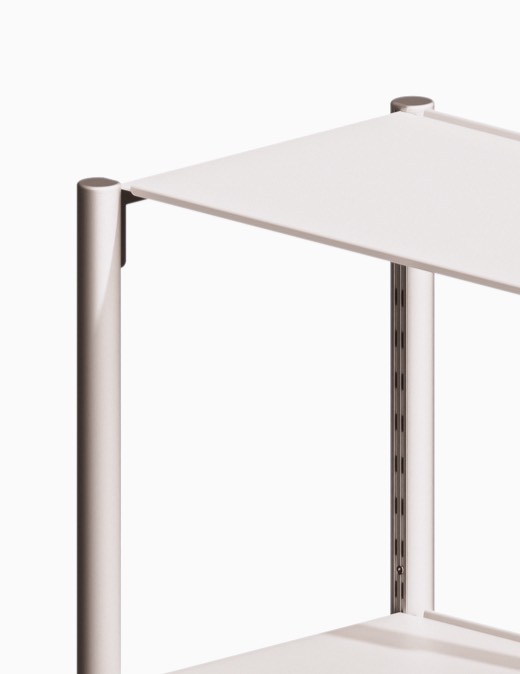
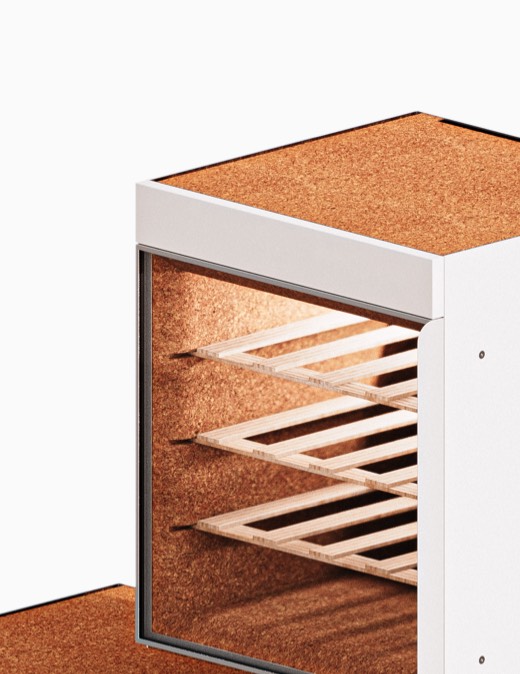
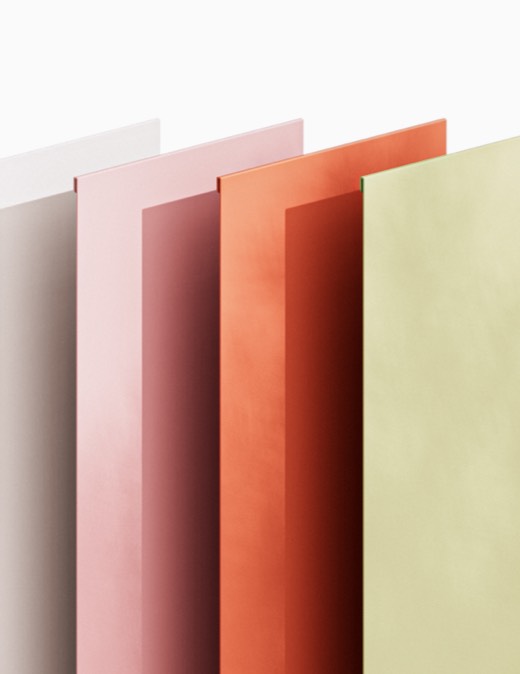


The structural elements
The structural elements are all those components that allow the refrigerator to stand steadily, giving freedom of choice for its placement and orientation. In addition to the pillars and shelves, feet and caps were also designed to complete the structure.
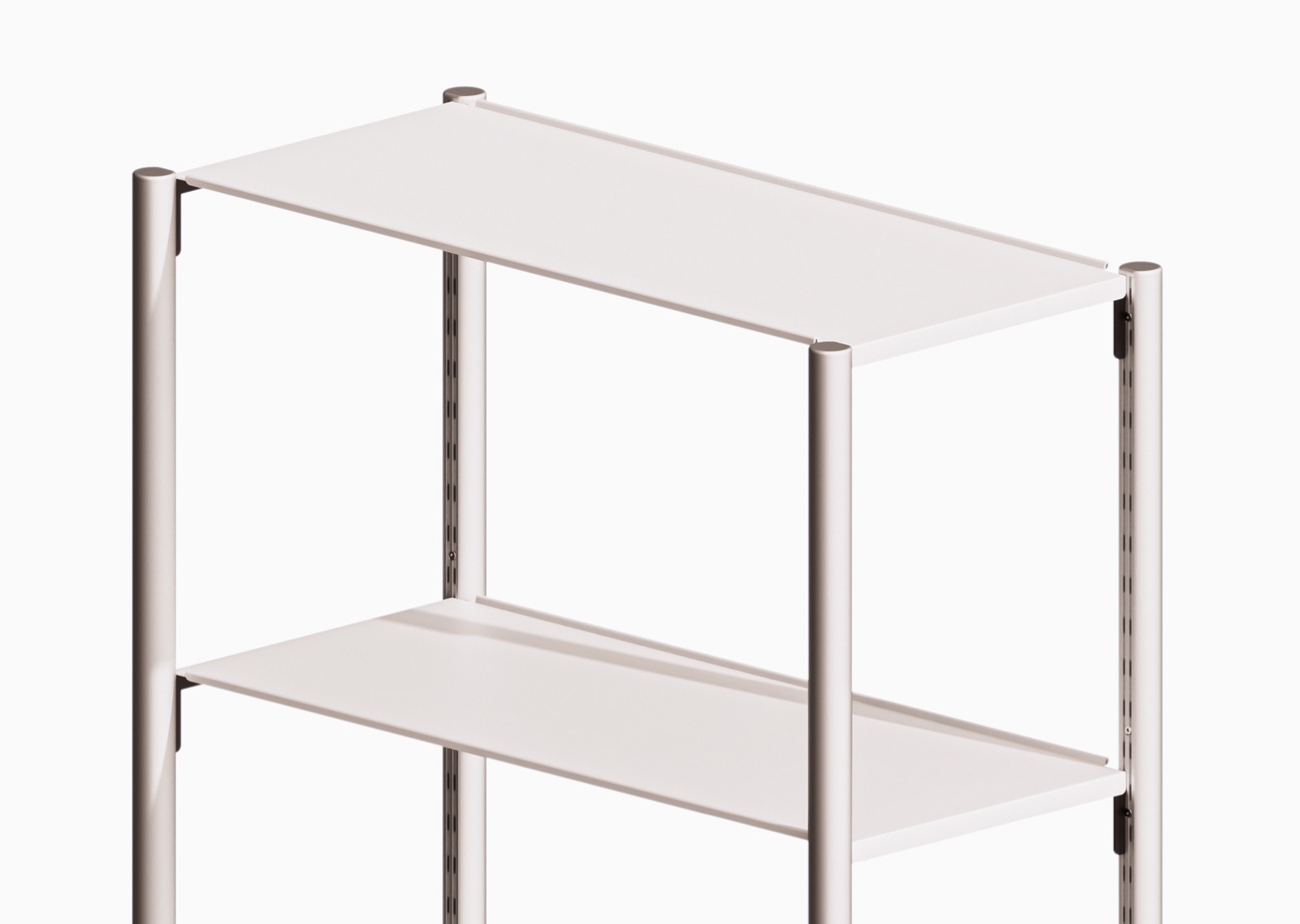
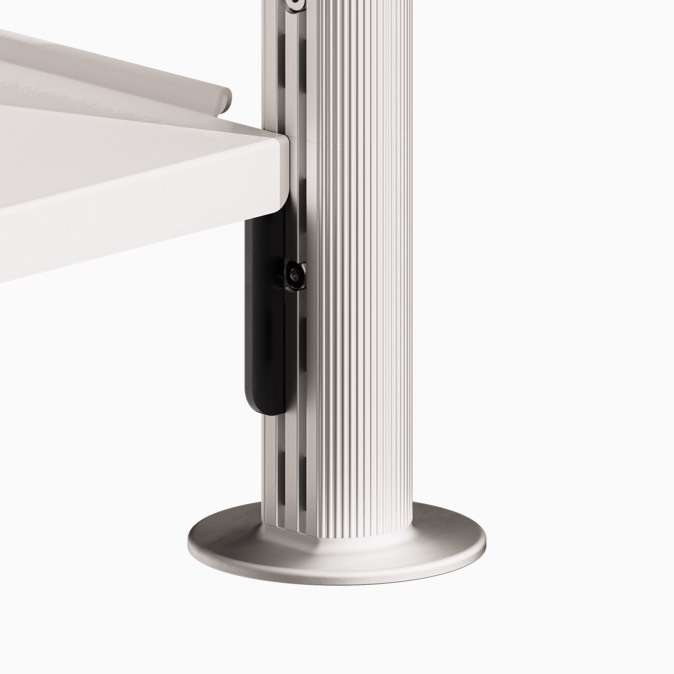
The pillars
The pillars consists of the union of two components: an inner track and an outer casing. The track provides the structural function and enables the anchoring of the shelves while the casing has a purely aesthetic function and can therefore be produced in different kinds of materials, colours and finishes.

The assembly of the structure
The pillars can be extended screwing together more than a module, with the use of a reinforcement steel block at joints. The use of the twin-slot shelving system patterns on the inner track of the pillars allows the structure to be completed with the shelves in an easy and reversible way.


The air conditioning circuit
The heart of the circuit is a Peltier cell, an electrothermal device that generates both cold and heat from an electrical current. On each side of it, two aluminium heat sinks and their respective fans push the cold and warm air outwards into the storage compartments.
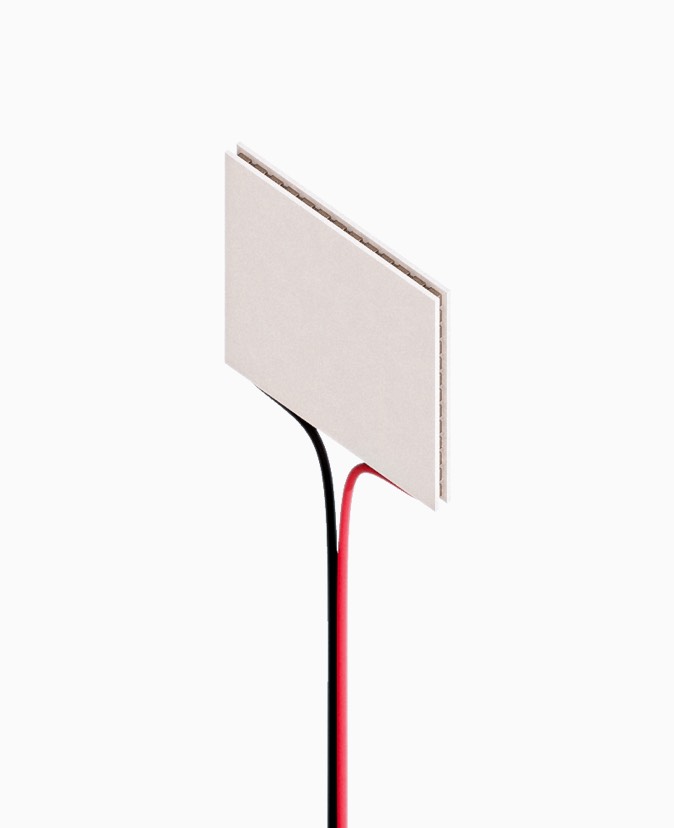
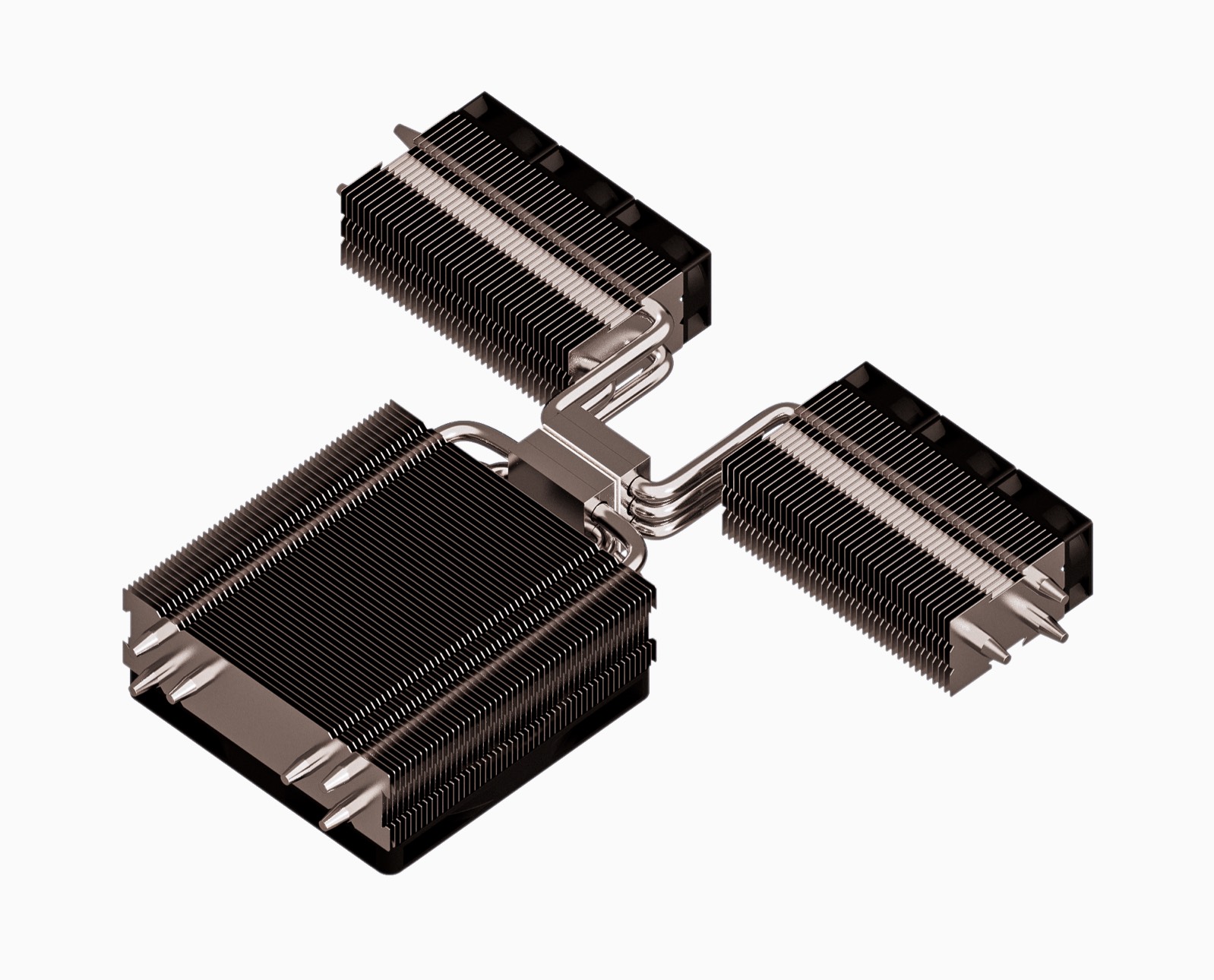
The technical drawer
All the technical parts related to the air conditioning circuit are contained in a drawer, that is joined to the rest of the structure through a pair of rails. In this way, the entire module can be easily pull-out in case of circuit failure, to be repaired or replaced with a new one.
The compartment assembly
The compartment consists of five walls obtained through the milling of cork slates previously expanded through steam. The walls are then held in place by steel plates and the technical drawer is added. This assembly process optimises the transport phase by reducing the volume occupied.
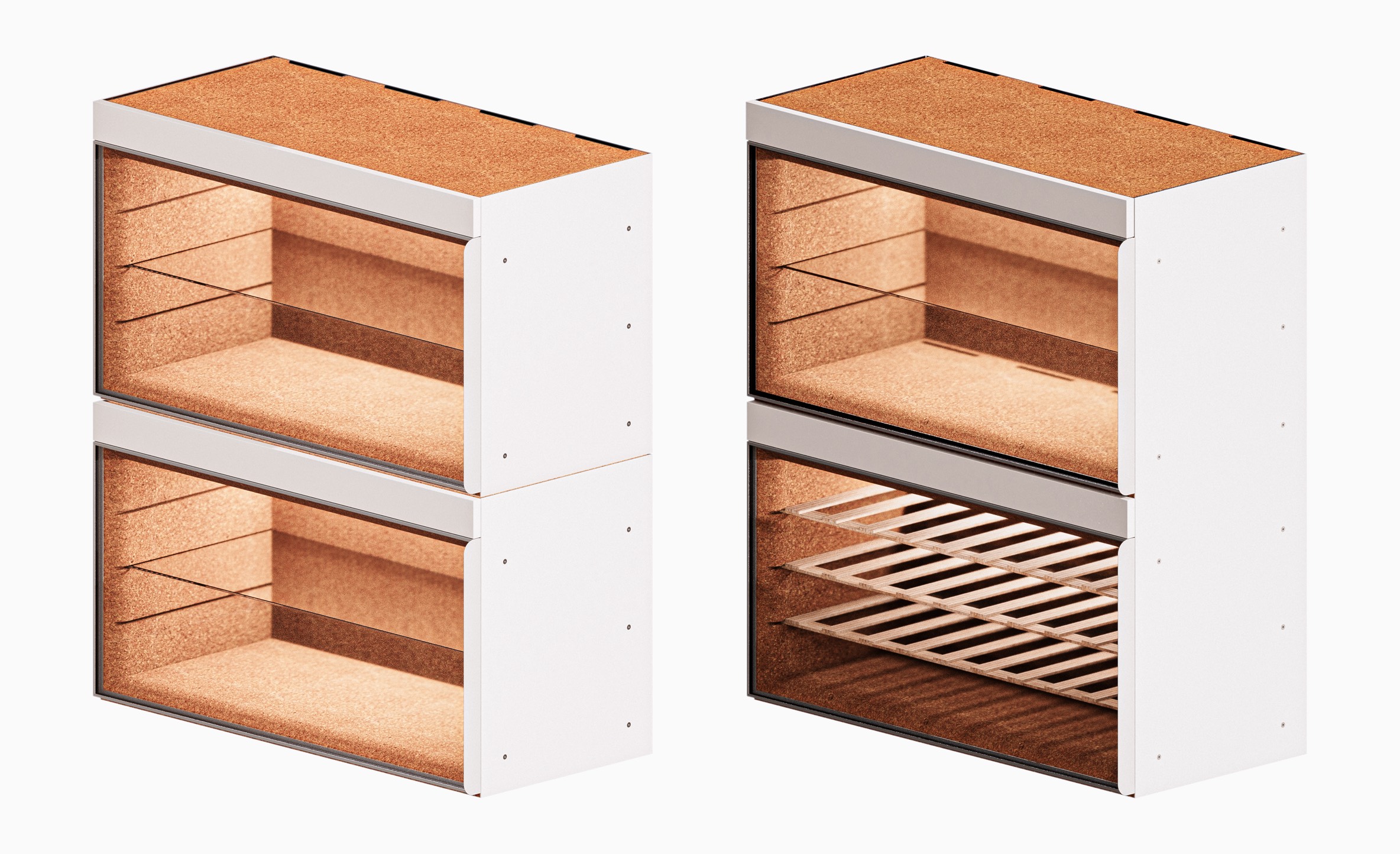
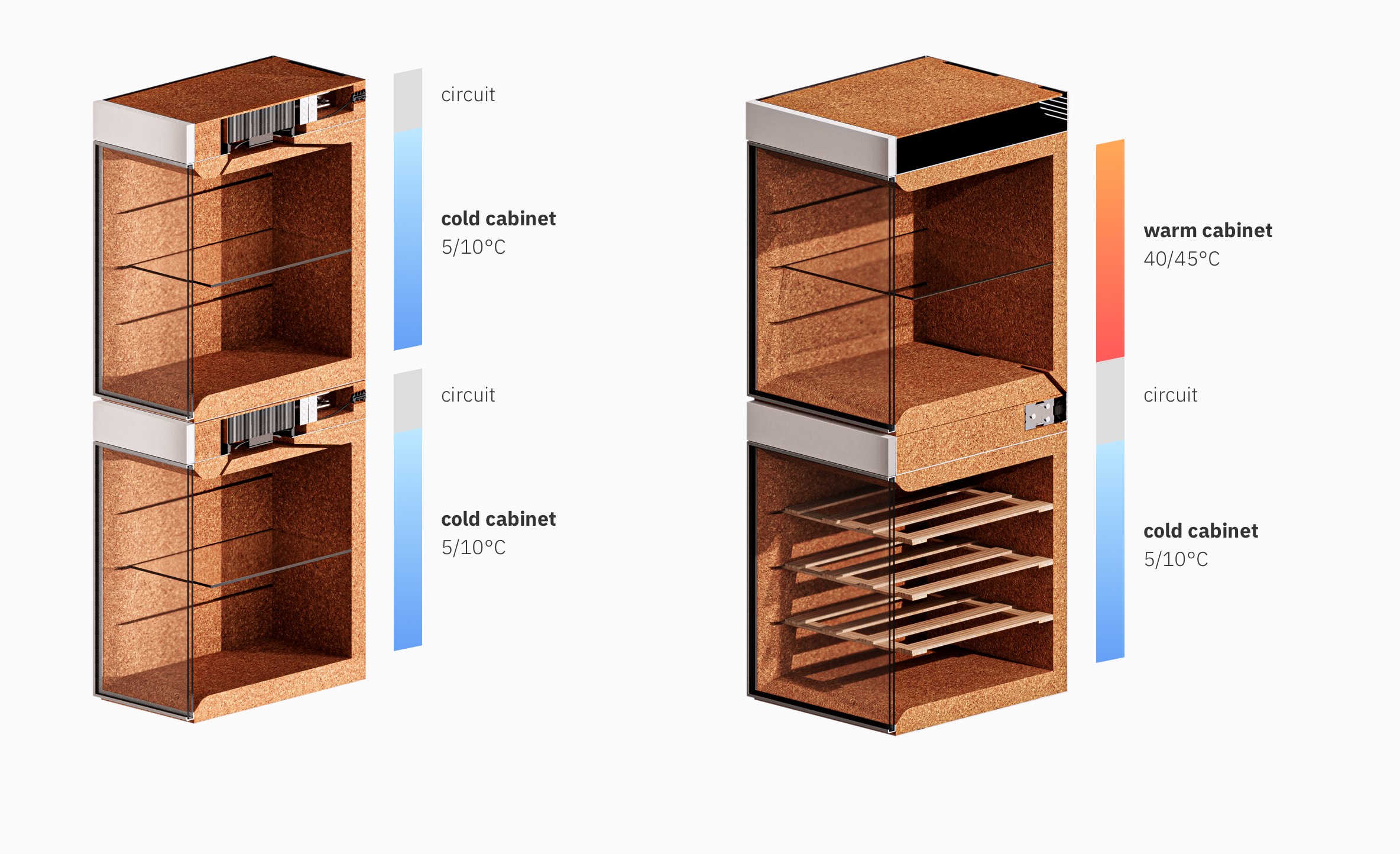
Option A - Single module
The heatsink fan attached to the cold side of the Peltier cell pushes cold air into the storage compartment below through channels obtained directly from the milling of the cork blocks. On the other hand, the hot air is pushed outside towards the back of the storage compartment as usually happens in traditional commercial refrigerators. Each module is therefore independent and can be regulated at different temperatures from each other.
Option B - Double module
In this scenario, hot air is not pushed outside, but flows to a second storange compartment located above the first one. In this way, from a single circuit it is possible to obtain both a refrigerated compartment and to use the parasitic heat generated to keep produts warm. Comparing this new solution with the use of a traditional refrigerator and a small oven to perform the same function, it is possibile to understand how this option is more sustainable, with a lower environmental impact.


A wide range of sustainable possibilities
A set of cover panels complete the system to adapt it to the characteristics of different locations. In particular, they are obtained by bending steel sheets treated with rapeseed oil, a finish that does not compromise the material’s recyclability. In addition to the steel panels, an adapter was also designed to use as cover panels boards of different materials.
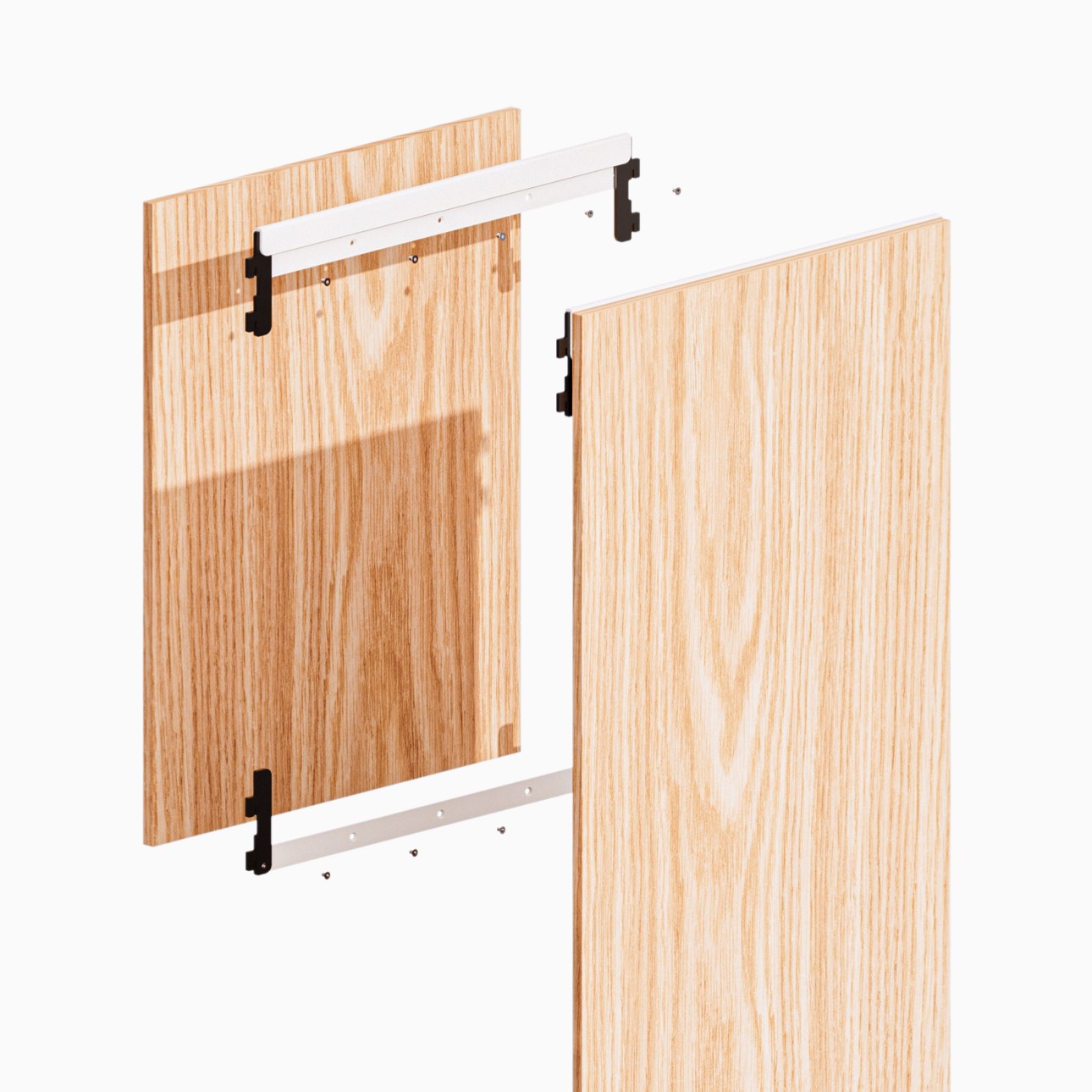
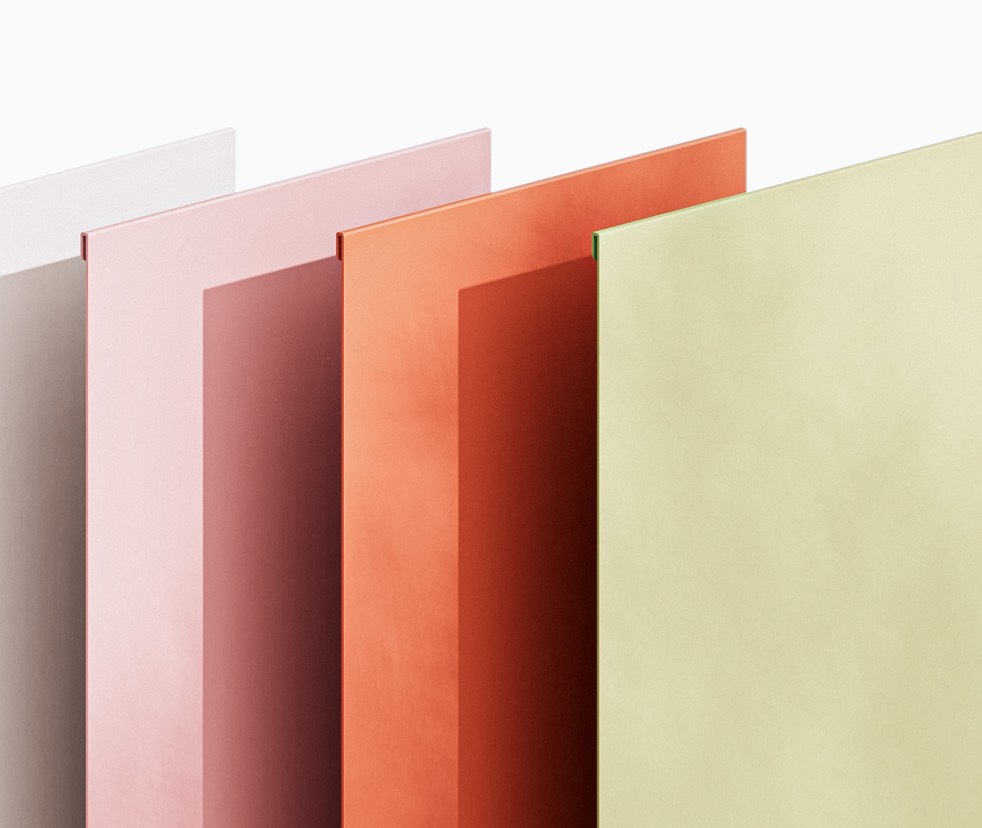


Suitable for different location
The modularity allows the configuration of customised refrigeration systems, according to the customer’s needs and the space constraints.
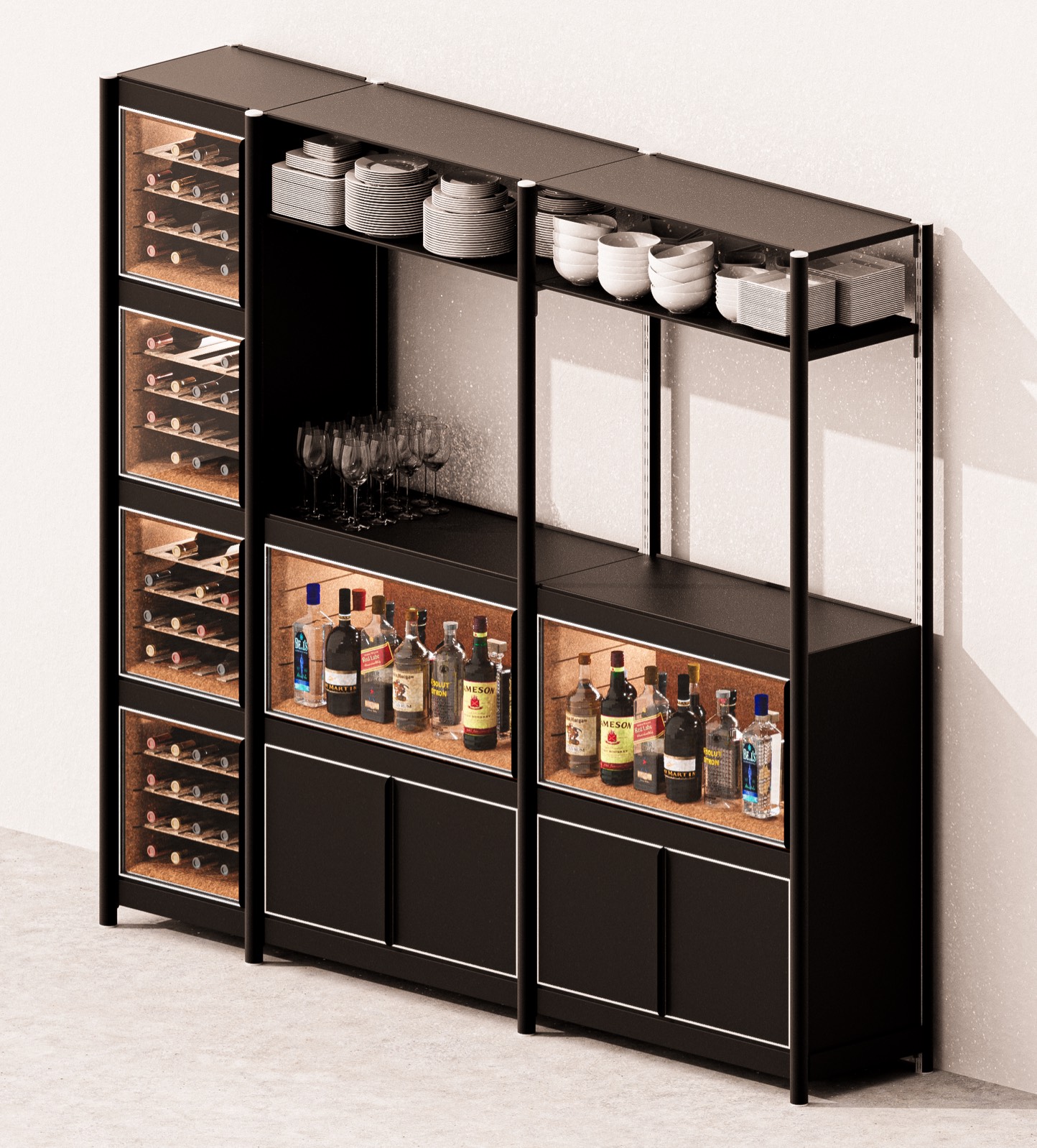
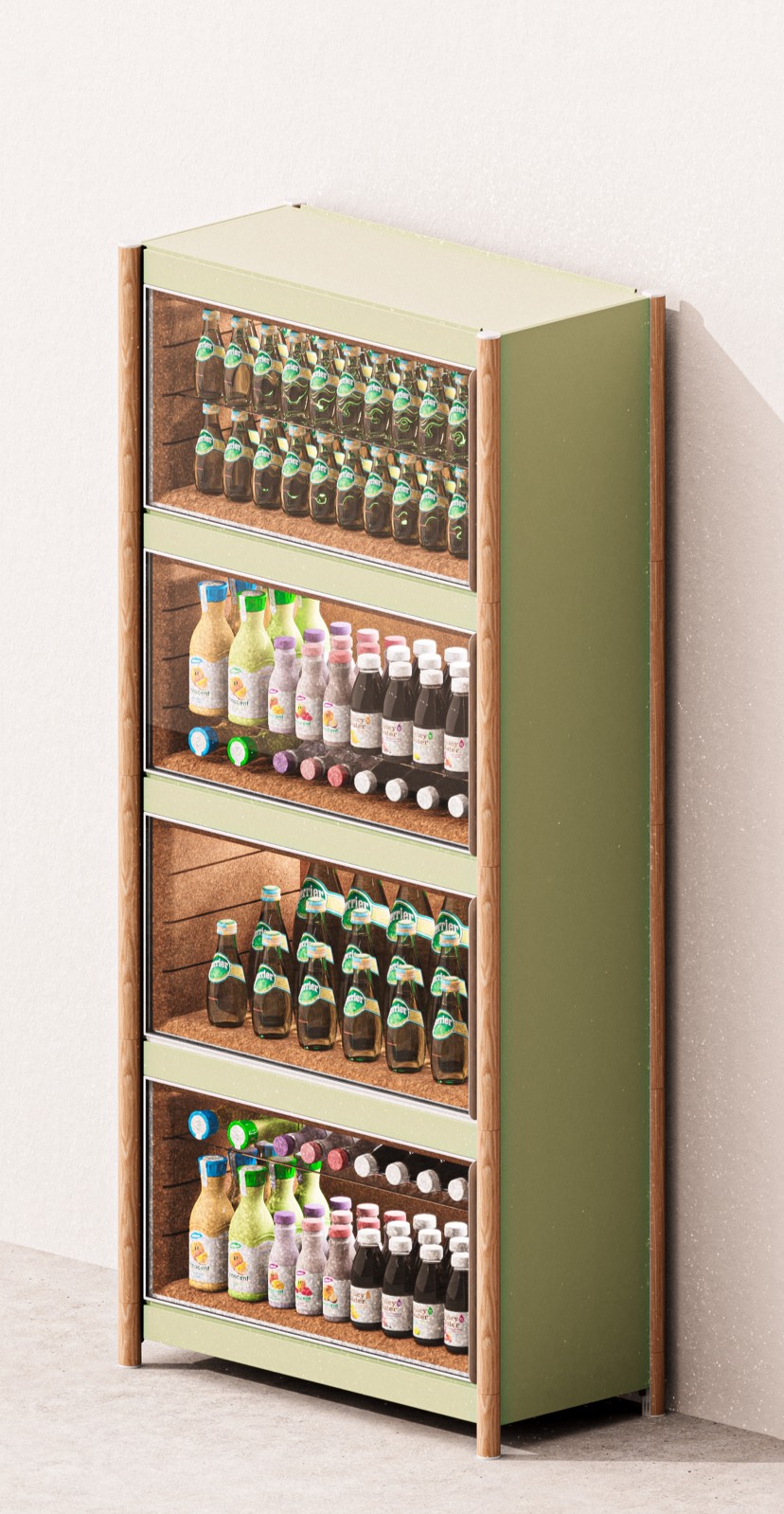


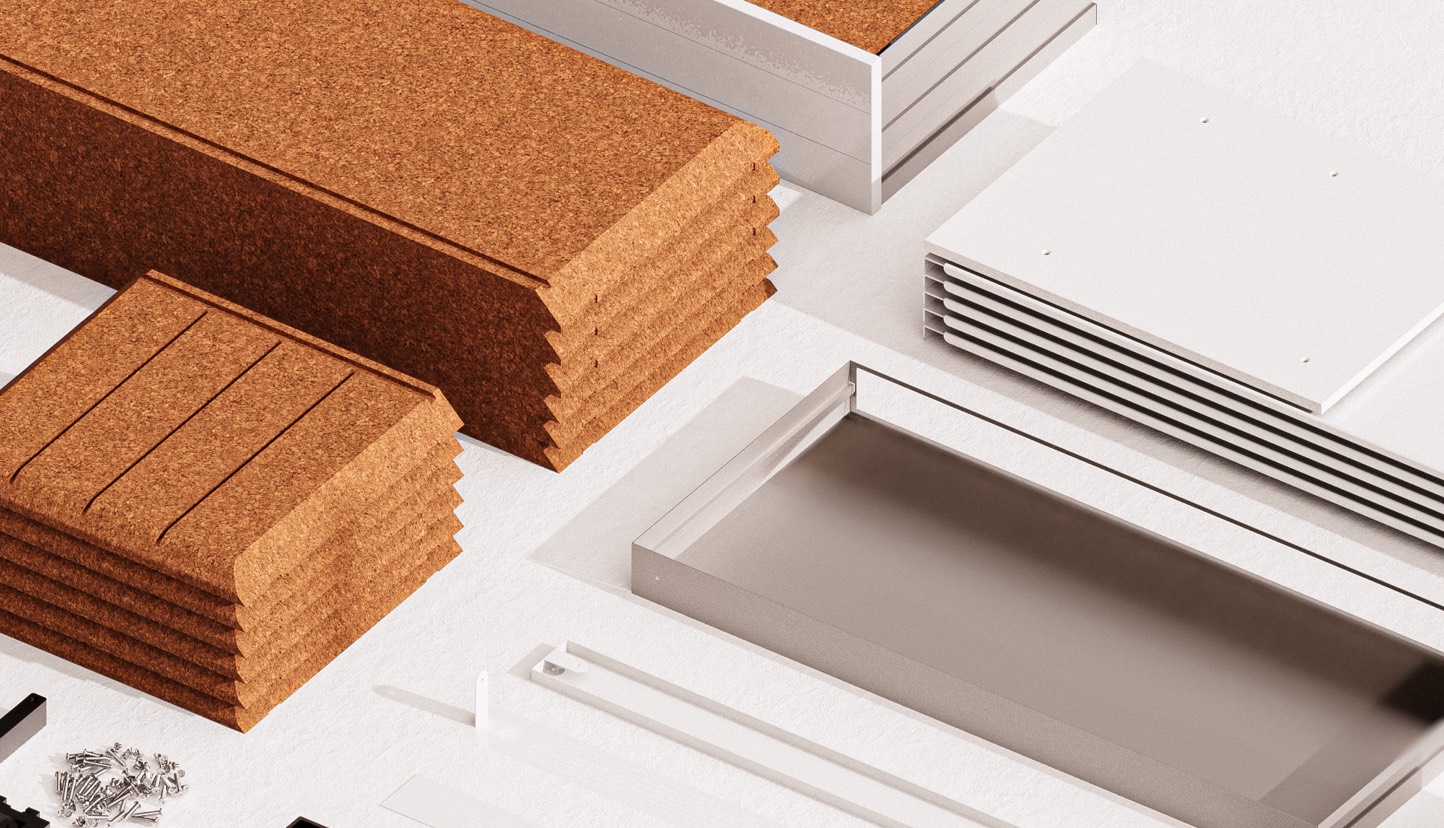
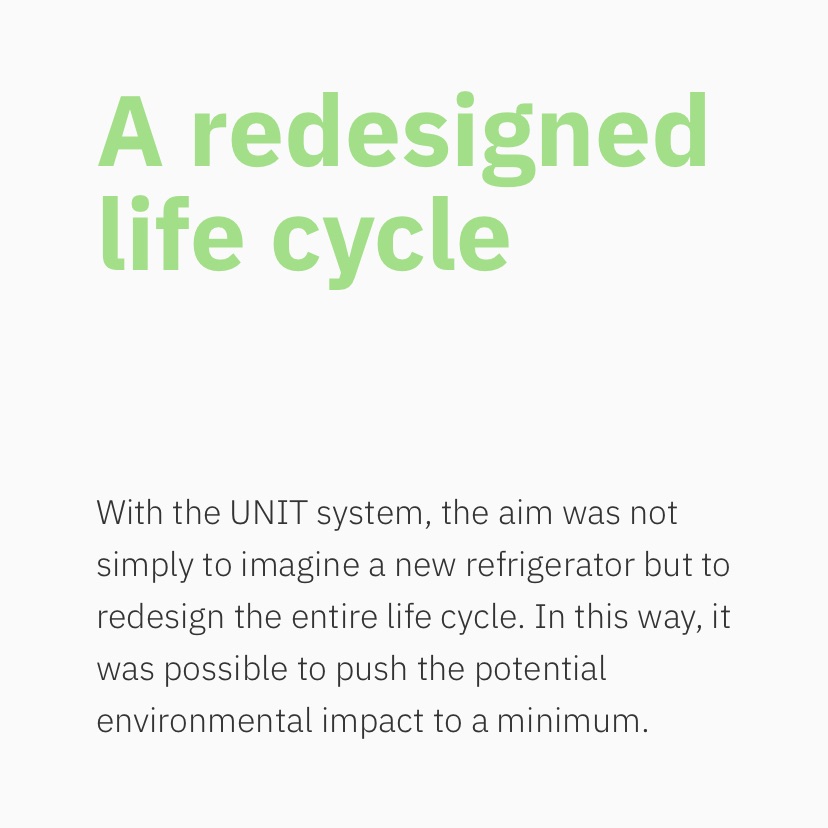
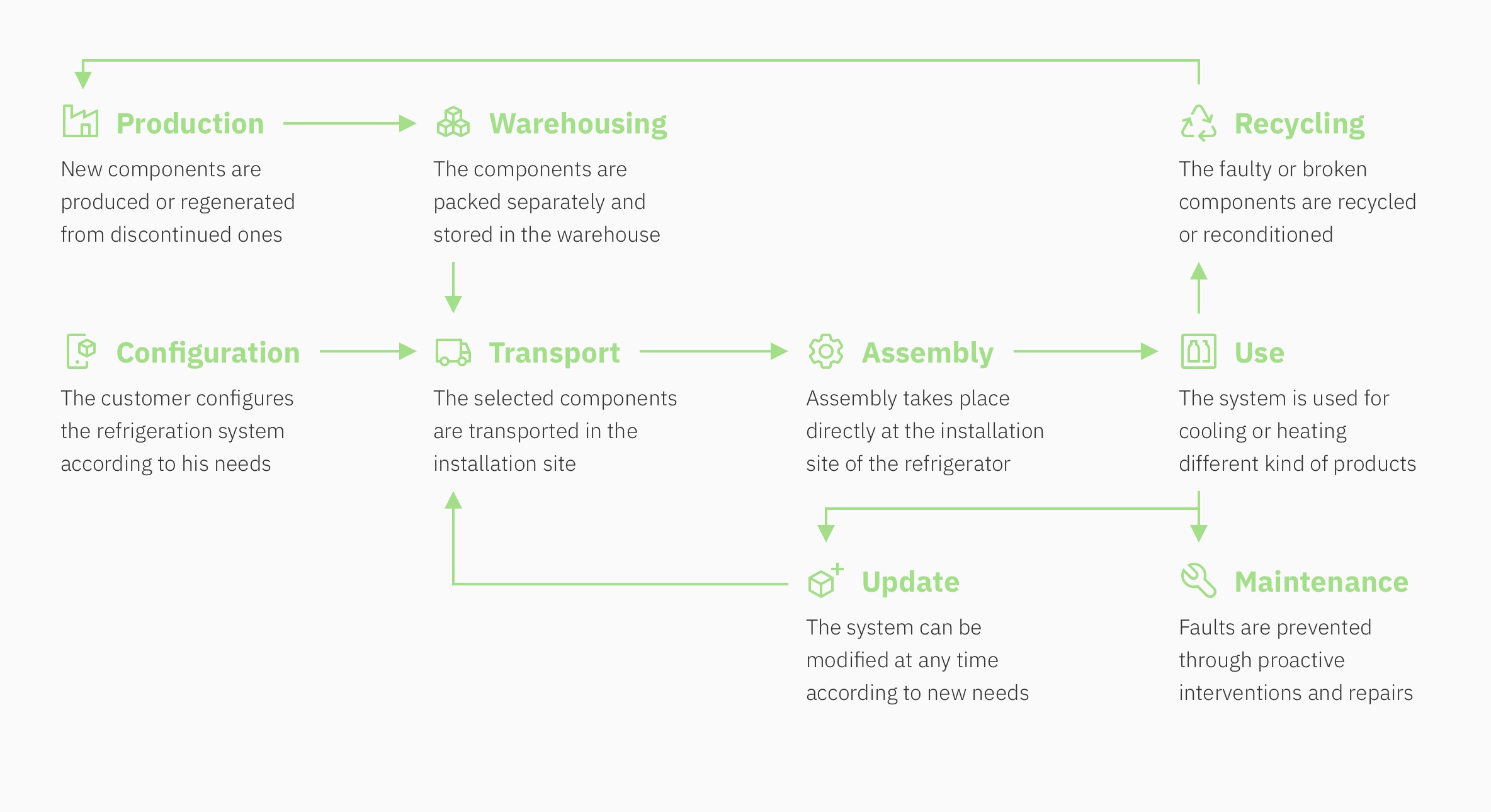
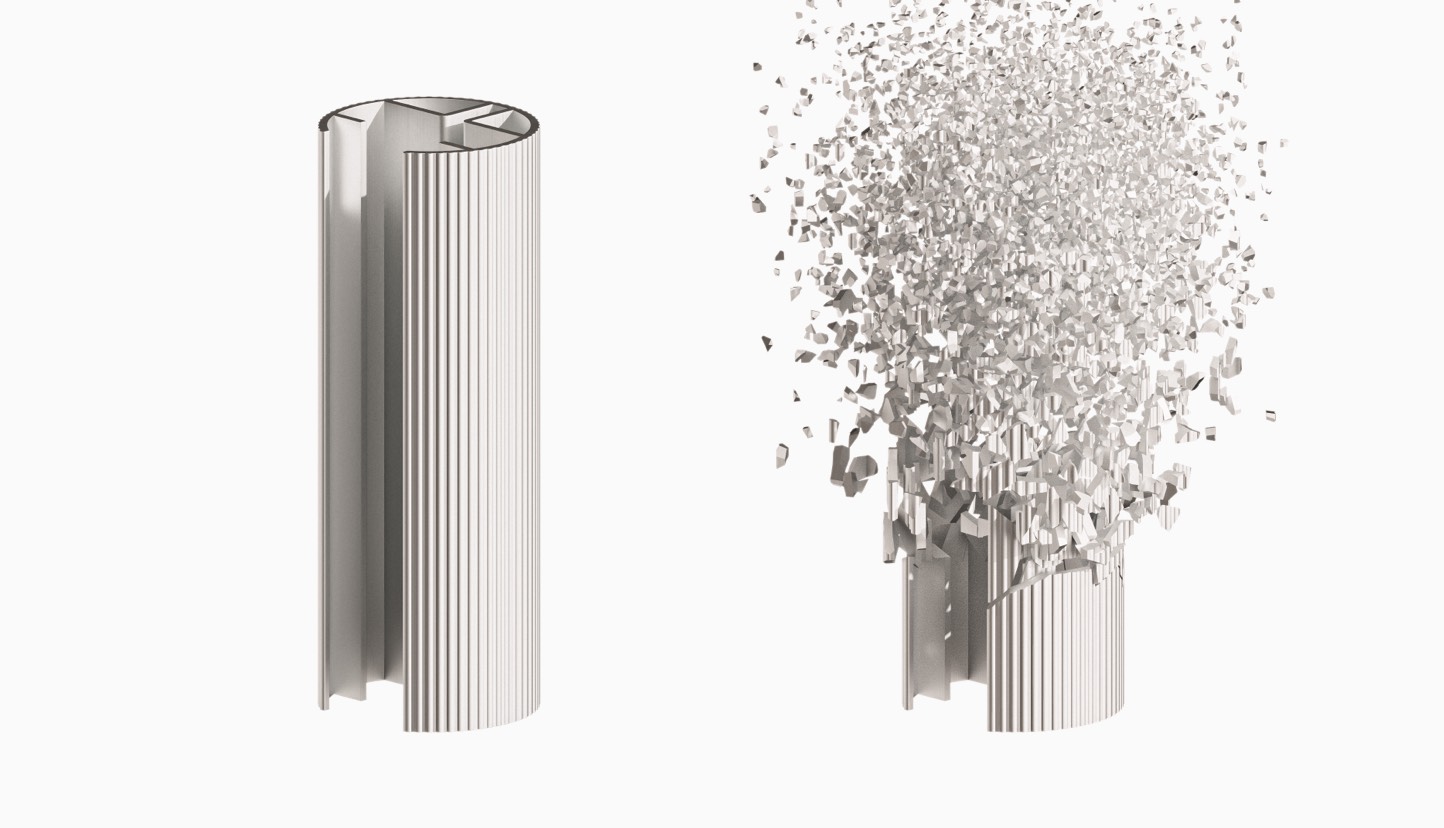
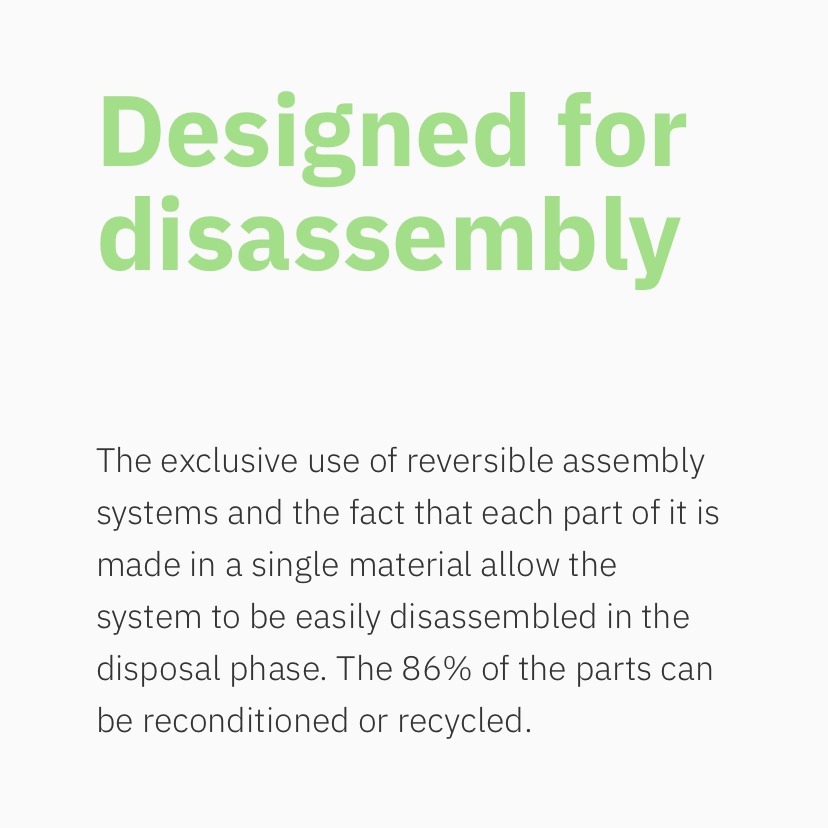
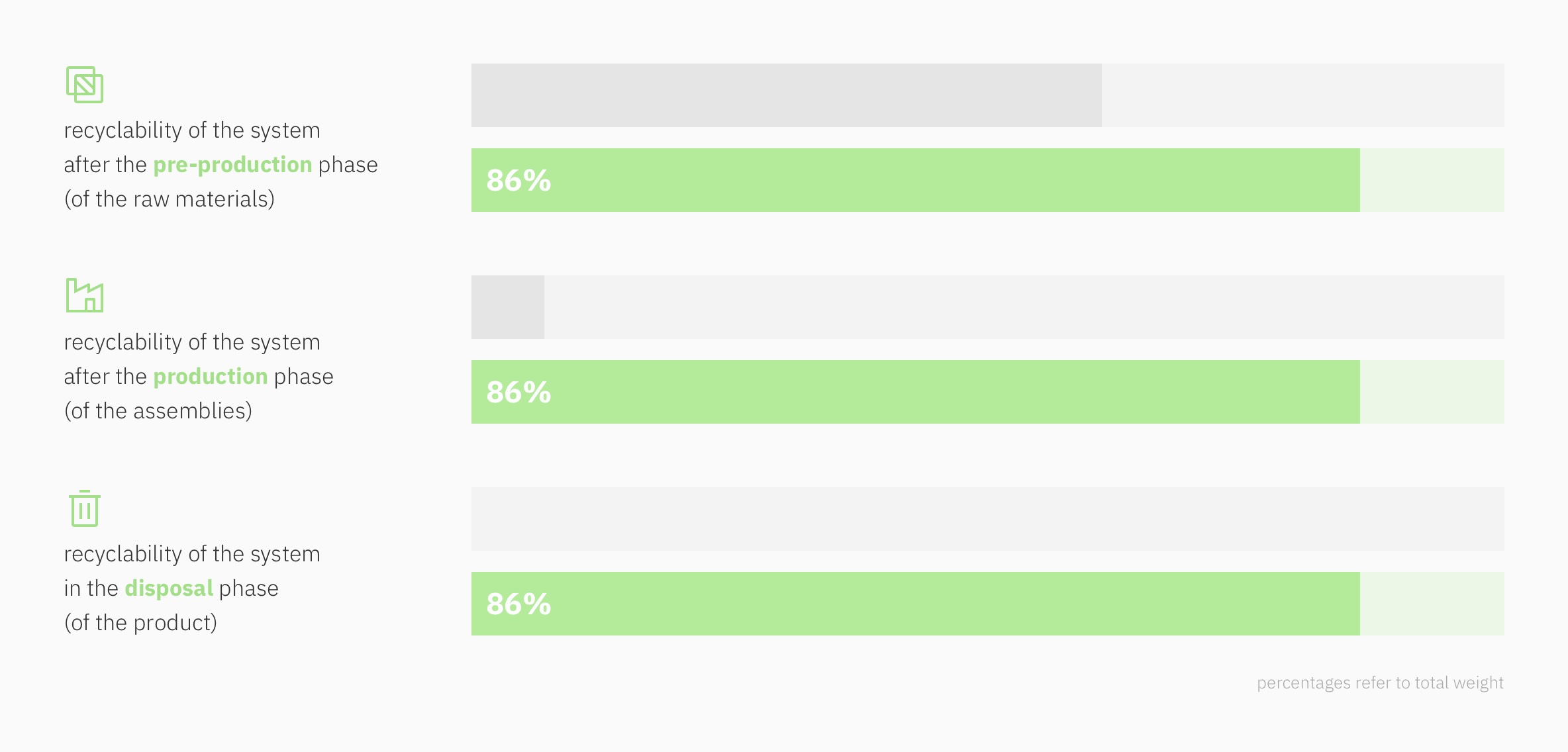
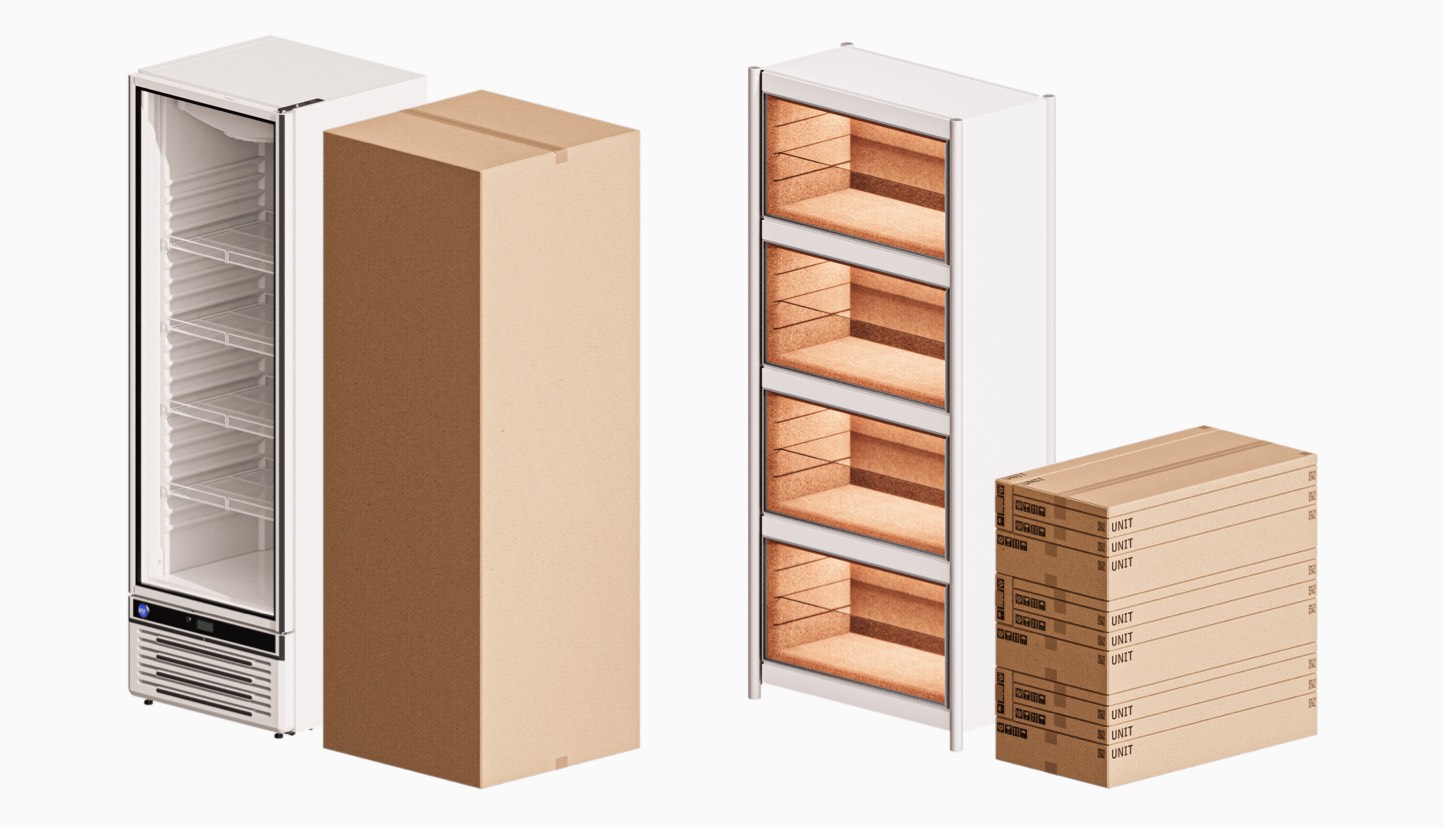
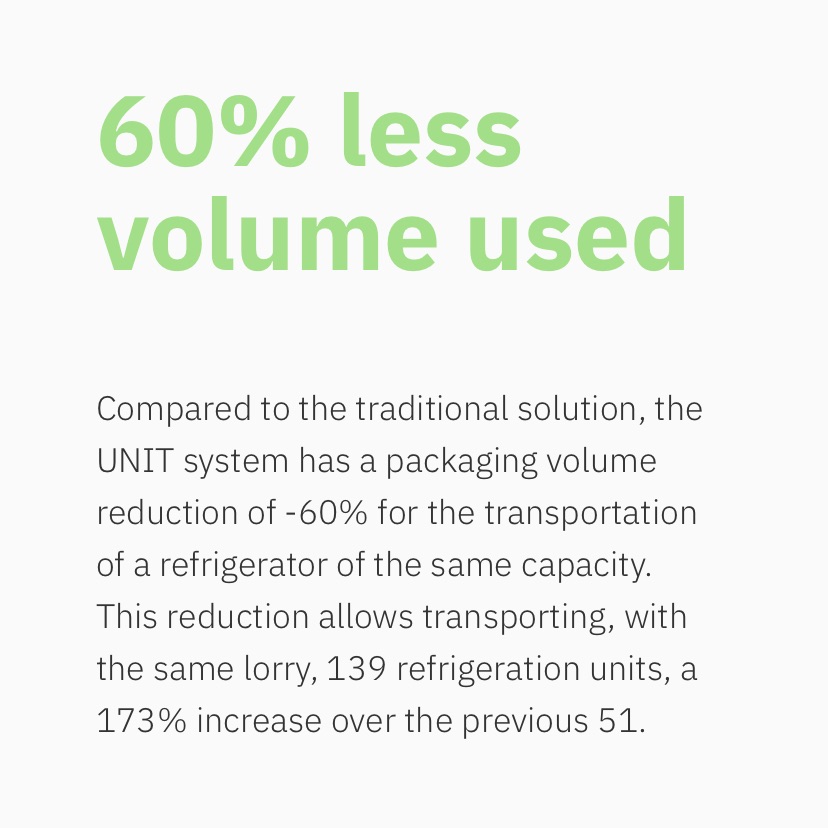
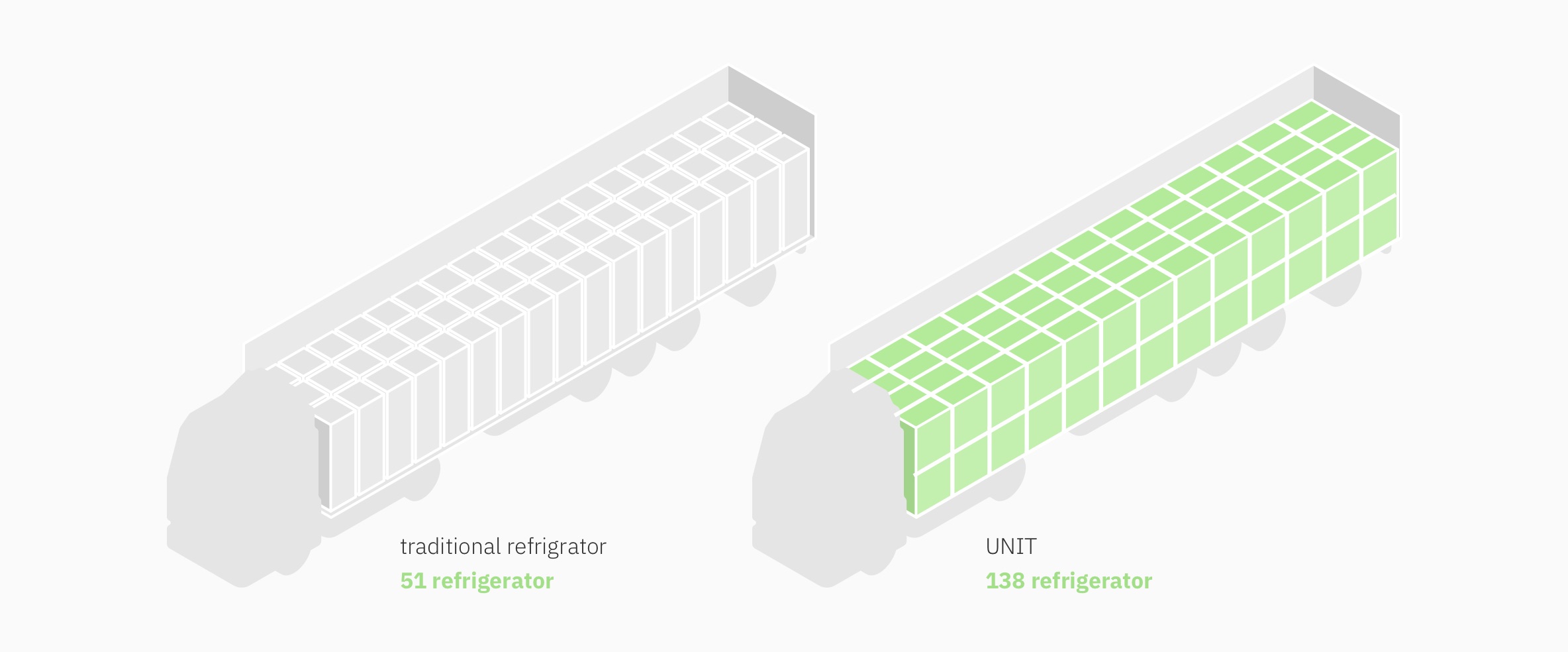

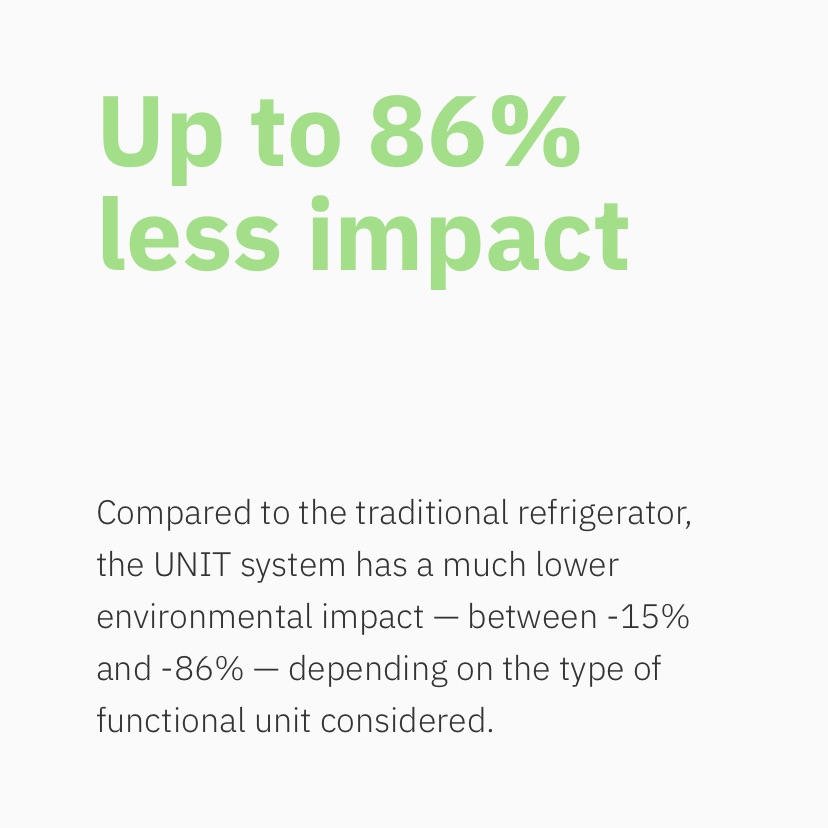


Politecnico di Milano - A.Y. 2021-2022
Master’s Degree thesis project
Master’s Degree thesis project
Mockmill
prodotti per la lavorazione dei cereali
UNIT
sistema di refrigerazione modulare
Dune
tappeto di gioco
l’architetto
sito web
Waves
dispositivo di interazione
Lunaria
passatempo
Irori
focolare ad induzione
MUJI
brochure
Capo
capotasto per chitarra
Stilo
matita irregolare
Steno
fotocamera stenopeica
SC0
chitarra classica